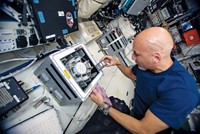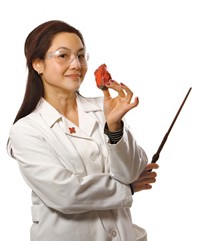Advertisement
Grab your lab coat. Let's get started
Welcome!
Welcome!
Create an account below to get 6 C&EN articles per month, receive newsletters and more - all free.
It seems this is your first time logging in online. Please enter the following information to continue.
As an ACS member you automatically get access to this site. All we need is few more details to create your reading experience.
Not you? Sign in with a different account.
Not you? Sign in with a different account.
ERROR 1
ERROR 1
ERROR 2
ERROR 2
ERROR 2
ERROR 2
ERROR 2
Password and Confirm password must match.
If you have an ACS member number, please enter it here so we can link this account to your membership. (optional)
ERROR 2
ACS values your privacy. By submitting your information, you are gaining access to C&EN and subscribing to our weekly newsletter. We use the information you provide to make your reading experience better, and we will never sell your data to third party members.
Biological Chemistry
Newscripts
Brewing beer on Mars and growing hairy skin
by Marc S. Reisch
January 29, 2018
| A version of this story appeared in
Volume 96, Issue 5
Beer on tap for Mars

It will be at least another 20 years before humans even get close to establishing a colony on Mars, according to the U.S. National Aeronautics & Space Administration. But when they do, they’ll be able to look forward to a nice cold brew of martian beer.
Ultimately, the success of that vision will owe a debt of gratitude to the enterprising folks at the St. Louis-based brewer Budweiser and eager astronomy students at Villanova University.
For its part, Budweiser has launched barley, one of the quintessential beer ingredients, aboard a SpaceX rocket to see how the grain survives in orbit. And budding Villanova scientists have grown hops, used to give beer its characteristic bitter taste, in simulated martian soil.
Dec. 15, 2017, marked the momentous launch of two Budweiser barley seed experiments on a round-trip journey to the International Space Station. One experiment aimed to study the effects on the seed itself of exposure to space conditions; the second examined barley germination in space.
After circling the Earth for 30 days, the two experiments returned to Earth, where the firm’s innovation team is now pondering the results. The company explains that it is “taking steps now to better understand how [beer] ingredients react in microgravity environments so that when we get to Mars, Budweiser will be there.”
However, Villanova students are a step ahead of their big-business competitor. The students have already determined that hops would grow well on Mars, reports Edward F. Guinan, a professor of astronomy and astrophysics at the school.
As part of a project to get undergraduate students to contemplate life in outer space, Guinan had students design experiments to see what kind of crops would grow on the fourth planet from the sun, according to a recent story in the New York Times.
Mostly the students chose to grow practical plants like salad greens, soy, and potatoes inside a greenhouse setup to simulate conditions in a similar greenhouse that could one day exist on Mars. The crushed basalt soil they used came from the Mojave Desert because it closely mimicked a 2008 analysis of the red planet’s soil by NASA’s Phoenix Mars lander.
The one group that chose to grow hops did so “because they’re students,” Guinan says. He nixed their original plan to grow marijuana. Among the plants a new cohort of students plans to grow this spring is barley. If they succeed, maybe Budweiser can hire them in a few decades to farm beer ingredients on the distant planet.
Hair-raising research

Closer to home and in the not-too-distant future, Indiana University School of Medicine scientists may be able to grow hairy skin in a dish. The advance would allow scientists to model skin diseases and test drugs that would stimulate or inhibit hair growth (Cell Rep. 2018, DOI: 10.1016/j.celrep.2017.12.007).
But there’s a hitch in the current prototype: Researchers have succeeded only in growing the hairy skin inside out. Using mouse pluripotent stem cells, they coaxed epidermis and dermis cells to form into spherelike organoids in which the top layer of the skin faces the interior.
“We need to find a way to flip the structure,” says lead researcher Karl R. Koehler, assistant professor of otolaryngology at the medical school. “Because the organoids are inside out compared with normal skin, the layers of dead cells and hairs cannot be shed as they are normally,” he explains.
Without these and other changes, the organoids have a shelf life of about a month. Success could also mean hairy human skin in a dish ready for new skin grafting techniques and therapies for human diseases, including alopecia, acne, and skin cancer, the researchers say.





Join the conversation
Contact the reporter
Submit a Letter to the Editor for publication
Engage with us on Twitter